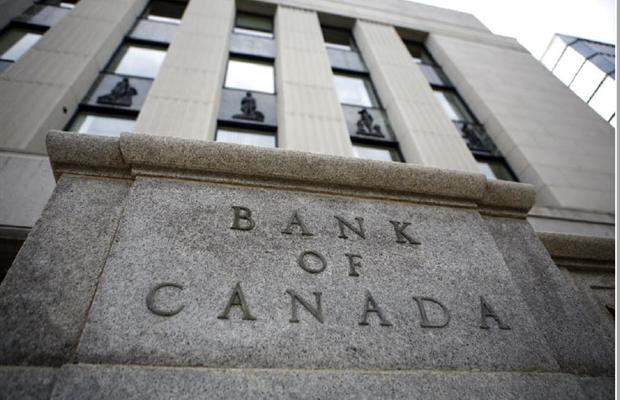Bank of Canada
Canadian Dollar
Http://www.bankofcanada.ca/
The Bank of Canada (English Bank of Canada, French Banque du Canada ) is Canada's central bank. It was founded by Act Bank of Canada Act of 1934, "to promote the economic and financial welfare of Canada ."
The current statement of its goals is:
It is the only authority that issues Canadian banknotes.
The headquarters of the Bank is located at the intersection of Wellington Street and Bank Street in downtown Ottawa.
History
Canada has long had no own central bank. Every major bank in the country issued their own banknotes and the cash supply in Canada was very poorly organized. The Federal Ministry of Finance gave bills only in small numbers. The Banque de Montréal, at that time the largest bank in the country, served as the State Bank. With the sophisticated branch banking Canada had a very stable banking system. There was little need for a lender of last resort, and the banking system was shaken not dependent seasonal liquidity problems as banks in the United States.
Although there were some advocates of a central bank, mostly farmers, remained the status quo at the beginning of the twentieth century exist.
This should only change with the wind a Great Recession. Many Canadians accused the banks to accelerate this recession through their behavior. The money supply shrank and deflation was part of the agenda. The demand of the farmers according to a central bank was now supported by the manufacturing sector and other groups. Another proponent was the Royal Bank of Canada, which grudged the rivals, Bank of Montreal, the state banking transactions. The government also felt limited in their options for action for repayment of foreign loans.
Prime Minister RB Bennett appointed then a commission that recommended the establishment of a central bank in 1931. The bank took their services on March 11, 1935 after the adoption of the Bank of Canada Act. It was initially founded as a privately held corporation to ensure its political independence. 1938, under Mackenzie King, it became a crown corporation owned by the government and one appointed by the Prime Minister Director.
The jurisdiction to issue banknotes was conferred in 1949 by the Ministry of Finance and the private banks were asked to take their notes from circulation. The Bank played an important role in financing the Canadian war effort in World War II.
Later, she was given the task of promoting economic growth in Canada. The subsidiary Industrial Development Bank was formed to encourage investments in Canadian companies. The monetary policy of the Bank has been focused on low interest rates and full employment with little concern for the inflation rate. As inflation began in the early 60s, the director James Coyne ordered a reduction in the money supply. Prime Minister John Diefenbaker did not agree with this decision and ordered a return to full employment objective. This caused a brief crisis since the bank was established as a market economy organized organization and should not be under political control. Coyne resigned and Louis Rasminsky took over his position.
The Bank established in the impact more on fighting inflation from so this was proclaimed in the 80s to their primary target.
Director
The head of the Bank of Canada is the director, who is appointed by the Board of Directors of the Bank for a seven year term. It can not be dismissed by the government. In the case of discrepancies between the government and bank to dig deep, the Canadian Minister of Finance may order in writing that the bank has to change their behavior. In practice, the Director of the monetary policy determined independently of the government.
Directors of the Bank of Canada
- Stephen Poloz (2013 - )
- Mark Carney (2008-2013)
- David A. Dodge (2001-2008)
- Gordon Thiessen (1994-2001)
- John Crow (1987-1994)
- Gerald Bouey (1973-1987)
- Louis Rasminsk (1961-1973)
- James Coyne (1955-1961)
- Graham Towers (1934-1954)










